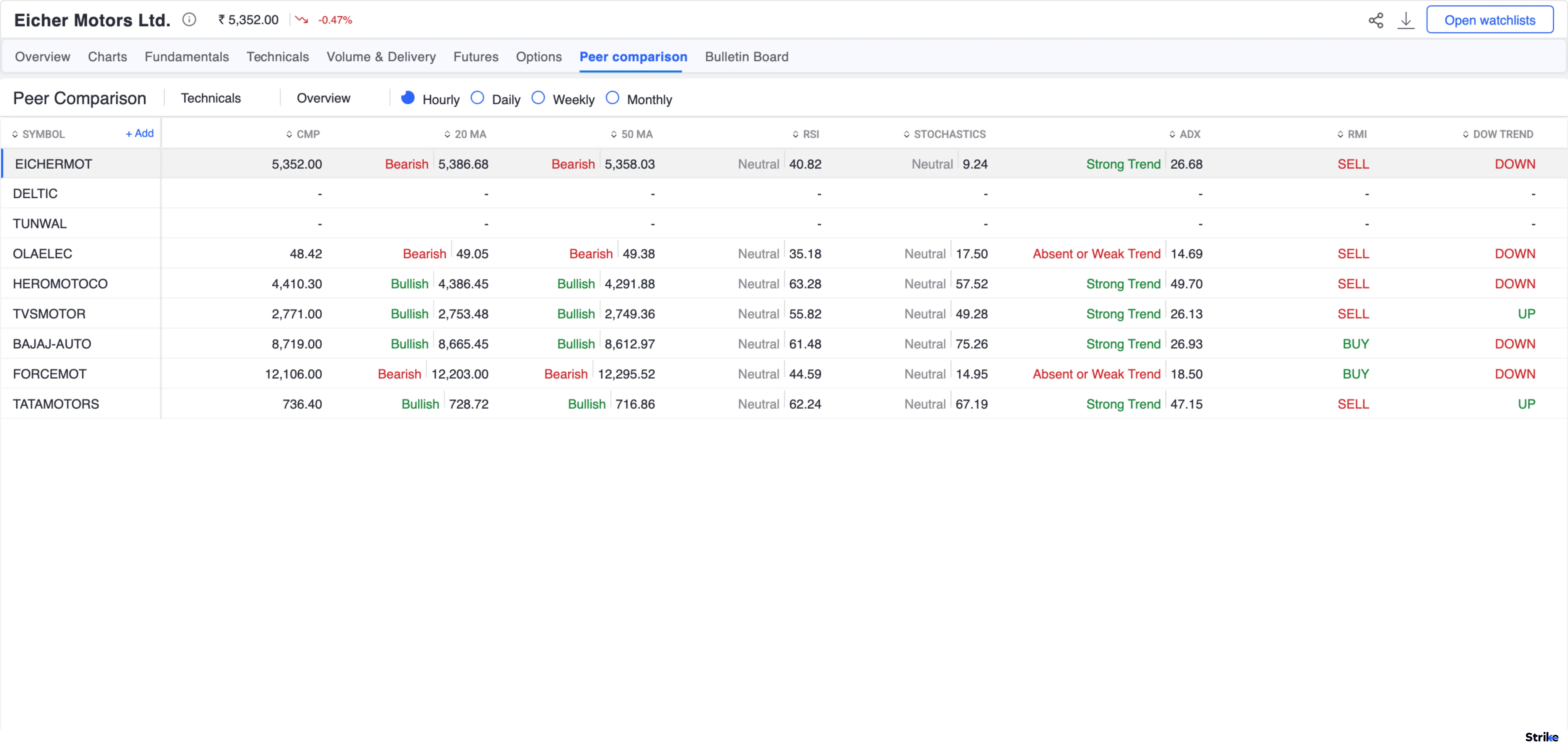What are Auto Sector Stocks?
Auto sector stocks refer to the stocks of automotive companies listed on Indian stock exchanges like NSE and BSE. The Indian auto sector is dominated by domestic players like Maruti Suzuki, Tata Motors, Mahindra & Mahindra as well as foreign automakers like Toyota and Hyundai. The performance of major automotive stocks is tracked by the Nifty Auto index on NSE which includes companies like Maruti, M&M, Tata Motors among others.
Why Invest in the Indian Auto Sector?
You should invest in India's automobile market majorly because projected to grow from $116.86 billion in 2023 to $217.90 billion by 2031, with a CAGR of 8.1%. The sector contributes over 7% to GDP and employs more than 35 million people. Domestic automobile sales surged to 23.85 million units in FY24, driven by rising disposable incomes and expanding middle-class demand. Household spending is expected to grow by 6.7% in 2024, further supporting vehicle purchase.
Government initiatives like the Production-Linked Incentive (PLI) scheme and FAME-II have significantly boosted manufacturing and the adoption of electric vehicles (EVs). Over 1.3 million EV subsidies where given under FAME-II, contributing to India's EV market, which is expected to reach $113.99 billion by 2029 at a CAGR of 66.52%. The upcoming FAME-III scheme aims to enhance EV infrastructure and adoption further.
Technological advancements such as connected vehicles, hydrogen-powered systems, and lithium-battery technologies are transforming the sector. Additionally, India's focus on localizing production through reduced import dependence and semiconductor manufacturing strengthens its position as a global automotive hub.
These factors collectively make the Indian auto sector a compelling investment opportunity with long-term growth potential.
What Factors Affect Auto Stock Prices?
Key factors influence the stock prices of auto companies include demand trends, raw material costs, government policies, and technological advancements.
Demand Trends
Rising demand for passenger vehicles and two-wheelers significantly impacts auto stock prices. For instance, in November 2024, two-wheeler retail sales grew by 15.8%, driven by sustained festive demand. However, passenger vehicle sales declined by 13.72%, highlighting the variability in consumer preferences across segments. Such fluctuations in demand directly affect the revenues and investor sentiment toward auto stocks.
Raw Material Costs
The cost of essential materials like steel and aluminum plays a crucial role in determining profitability. High raw material costs can compress margins, negatively impacting stock prices. Additionally, the semiconductor shortage has been a persistent challenge for the industry. With global automakers losing billions in revenue due to production cuts caused by chip shortages, prolonged supply chain issues continue to weigh on stock valuations.
Government Policies
Regulatory measures like emissions norms and tax policies under the Goods and Services Tax (GST) regime also shape stock performance. The GST system has streamlined taxes, reducing costs for manufacturers and consumers alike. For example, electric vehicles (EVs) benefit from a reduced GST rate of 5%, compared to 28% for conventional vehicles, which fosters EV adoption and supports related stocks. Stricter emissions norms may increase compliance costs for manufacturers but also encourage innovation in cleaner technologies.
Technological Innovation
Advances in EVs, autonomous driving, and connected car technologies are transforming the auto sector. Companies investing heavily in innovation often attract higher valuations due to their growth potential. However, adapting to these changes also requires significant capital expenditure, influencing short-term profitability.
While demand trends and innovation drive growth prospects, challenges like rising raw material costs, the semiconductor shortage, stringent emissions norms, and fluctuating GST rates create complexities for investors. Monitoring these factors is essential for understanding the dynamics of auto stock prices.
How to Analyze Auto Sector Stocks Before Investing
To choose the best auto stocks, we will analyse fundamental and technical parameters and data using Strike Money.
The first step before choosing the best auto stocks is to analyze the technical parameters of auto stocks like Tata Motors and its peers or competitors functioning in the banking sector.

We will go through 8 data points on a weekly time frame and study the readings of 20 MA, 50 MA, RSI, stochastics, ADX, Rohit Momentum Indicator (RMI) and Dow Trend.
While studying the technical parameters of the auto stocks, it is studied that Eicher Motors is one of the few stocks that has maintained a bullish trend on 20 and 50-day moving averages on its Weekly Time Frame.
In contrast, RSI and stochastic indicators, which are momentum oscillators, are also suggesting neutral characteristics. Eicher Motors is the only Auto Sector which is showing ‘New Buy’ readings on the RMI indicator. Weak readings on ADX could suggest a potential upcoming trend change, suggesting a probable opportunity to catch this stock before breaking out.
What are the Advantages of Investing in Auto Sector Stock?
Investing in auto sector stocks offers strong growth potential due to India's rising middle class and increasing vehicle demand. The sector benefits from government initiatives like PLI schemes and EV policies, creating long-term growth opportunities. Auto stocks often provide steady dividends due to established companies' stable cash flows and proven business models. The sector's correlation with economic growth makes it a good indicator of overall market health, while its diverse sub-segments (from luxury to budget vehicles) offer various investment options.
What are the Risks of Investing in Auto Sector Stocks?
Auto sector stocks face significant risks from volatile raw material costs (especially steel and rubber) and currency fluctuations affecting profit margins. The sector is highly cyclical and sensitive to economic downturns, interest rates, and fuel prices, which directly impact consumer purchasing power. Rapid technological changes, especially the shift towards electric vehicles, create uncertainty and require substantial R&D investments that strain company finances. Regulatory changes, including emission norms and safety standards, force companies to make expensive modifications to their production processes and vehicles.